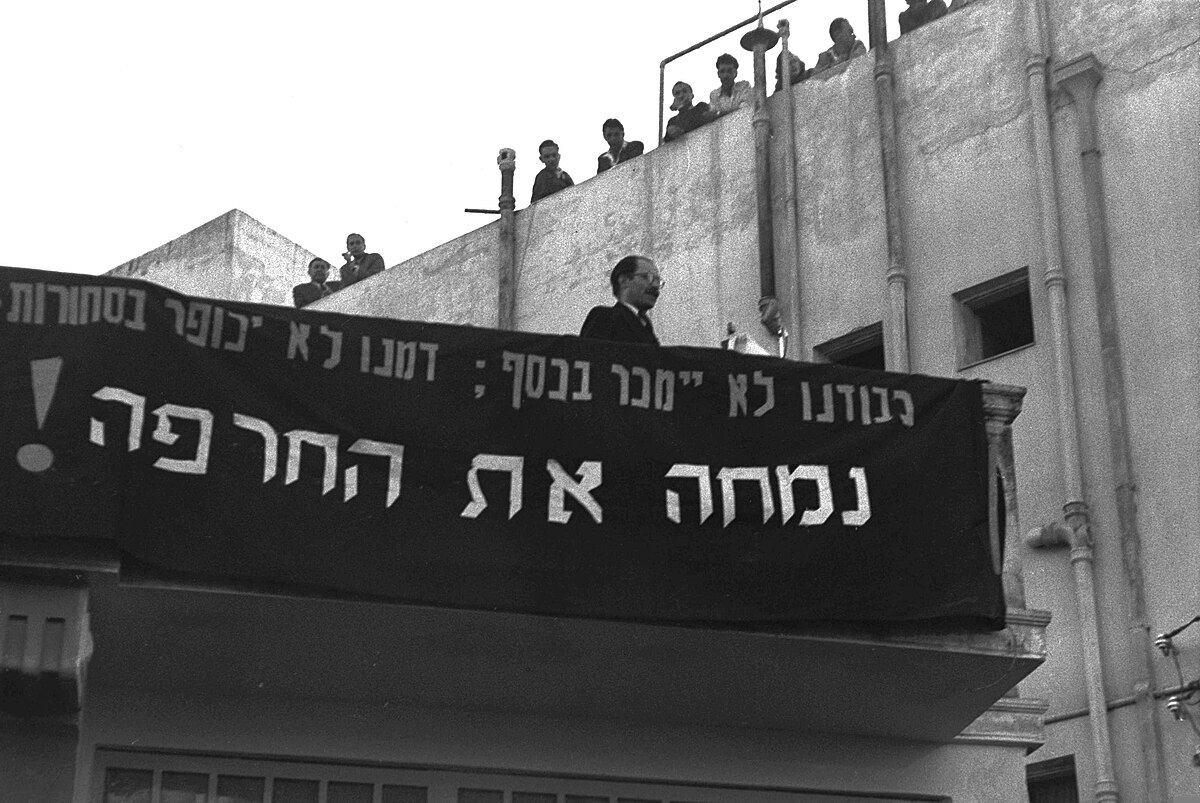
Establishment Years
IsraelIn 1949, Israel's 120-seat parliament, the Knesset, initially met in Tel Aviv and later moved to Jerusalem following the 1949 ceasefire. The country's first elections in January 1949 resulted in a victory for the Socialist-Zionist parties Mapai and Mapam, winning 46 and 19 seats respectively. David Ben-Gurion, the leader of Mapai, became the Prime Minister, forming a coalition that excluded the Stalinist Mapam, indicating Israel's non-alignment with the Soviet bloc. Chaim Weizmann was elected as Israel's first President, and Hebrew and Arabic were established as official languages. All Israeli governments have been coalitions, with no party ever securing a majority in the Knesset. From 1948 to 1977, governments were predominantly led by Mapai and its successor, the Labour Party, reflecting a Labour Zionist dominance with a primarily socialist economy.
Between 1948 and 1951, Jewish immigration doubled Israel's population, significantly impacting its society. Around 700,000 Jews, mainly refugees, settled in Israel during this period. A large number came from Asian and North African countries, with significant numbers from Iraq, Romania, and Poland. The Law of Return, passed in 1950, allowed Jews and those with Jewish ancestry to settle in Israel and gain citizenship. This period saw major immigration operations like Magic Carpet and Ezra and Nehemiah, bringing large numbers of Yemenite and Iraqi Jews to Israel. By the late 1960s, about 850,000 Jews had left Arab countries, with the majority relocating to Israel.[189]
Israel's population grew from 800,000 to two million between 1948 and 1958. This rapid growth, primarily due to immigration, led to an Austerity Period with rationing of essentials. Many immigrants were refugees living in ma'abarot, temporary camps. Financial challenges led Prime Minister Ben-Gurion to sign a reparations agreement with West Germany amidst public controversy.[190]
Educational reforms in 1949 made education free and compulsory until age 14, with the state funding different party-affiliated and minority education systems. However, there were conflicts, particularly around the secularization efforts among orthodox Yemenite children, leading to public inquiries and political consequences.[191]
Internationally, Israel faced challenges such as Egypt's closure of the Suez Canal to Israeli ships in 1950 and the rise of Nasser in Egypt in 1952, prompting Israel to establish relations with African states and France.[192] Domestically, Mapai, under Moshe Sharett, continued to lead following the 1955 elections. During this period, Israel faced fedayeen attacks from Gaza[193] and retaliated, escalating violence. The period also saw the introduction of the Uzi submachine gun in the Israeli Defense Forces and the start of Egypt's missile program with former Nazi scientists.[194]
Sharett's government fell due to the Lavon Affair, a failed covert operation intended to disrupt US-Egypt relations, leading to Ben-Gurion's return as Prime Minister.[195]
